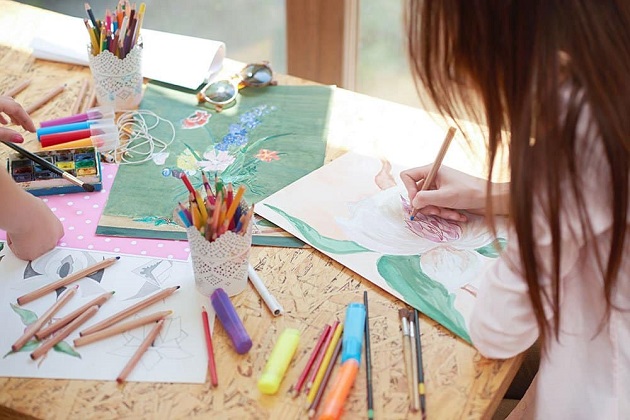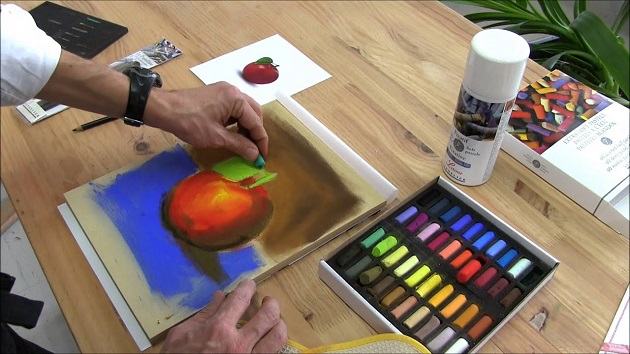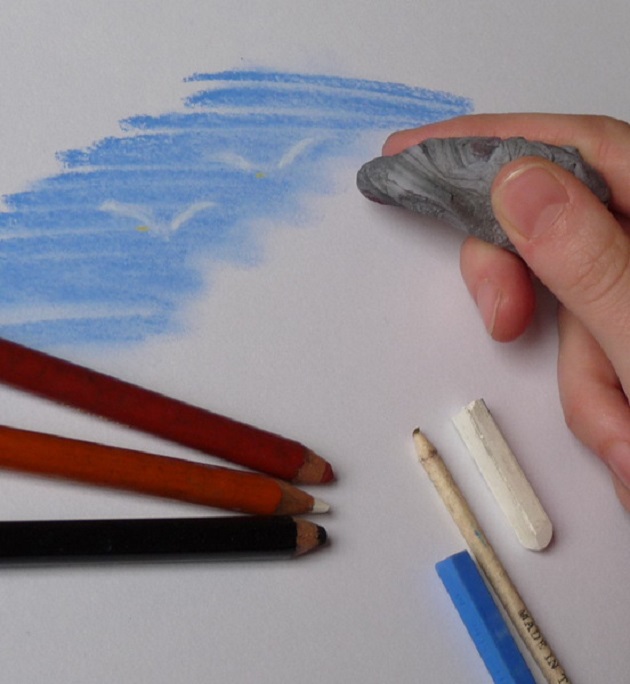Getting Started with Pastel Art: Important Supplies You Need
If you love creating art, then you must try the pastel technique. Painting or drawing with pastels is a pretty fun and easy way to express your ideas into beautiful art. And just like starting with any new hobby, you first have to assemble the essential supplies that you’ll need. Pastel painting requires many different art tools that you should be well acquainted with, so let’s see in more details what you need for pastel art.

Source:Createlet
Pastel Types
There are four main types of pastels: pencil, soft, hard and oil pastels. Depending on your level of skill and the outcome you want to create, you can use one or more of these types.
Pencils
Pastel pencils produce brilliant colours and you can just dive right in without the need of paintbrushes, a palette or solvents. These are great for beginners who have no experience in creating art. They allow you to apply rich colour to the surface pretty quickly, like no other medium can. Artists pastel pencils, along with the soft and hard pastels, are bound with gum or resin which means they’re compatible with one another and they can be used on the same drawing or painting.
If you want to create a controlled, detailed work of art, you can do it with a diverse range of artists pastel pencils. They will give you more control over the final look of your art piece. Plus, you won’t have messy fingers and hands thanks to the smooth wooden barrel casings. Each colour is made with a soft powdery finish for smooth application and easy blending. Even though they are versatile enough to be used on their own, artists also combine them with other pastel types (excluding oil pastels). You can sharpen the pastel pencils to a point to create precise details or you can use them bluntly for soft and hazy lines.
Depending on the pastel manufacturer, you can find from 8 to 72 pencil colours per set. The set you’ll choose should depend on the versatility of the colours that you need. However, if you are a beginner, it’s recommended to start off with a small selection of individual colours to experiment with and see what works best.

Source:Youtube
Soft Pastels
Soft pastels are a high concentration of pigment held together by the least possible amount of gum binder. Because of this, they can crumble very easily while proving wonderfully intense colours. They’re well suited to blending. If you’re at an advanced level of painting with pastel types and you need a wide range of colours, the soft pastels can offer you up to 500 different hues. They come in cylindrical sticks and in different sizes (whole sticks, half sticks and thick sticks).
Hard Pastels
As opposed to soft pastels, hard pastels contain more binder and less pigment. As a result, their colours are less intense, but they don’t break or crumble that easily. Hard pastels are well suited for drawing techniques and working on location. They can be cylindrical or square sticks therefore can be sharpened with a knife to create fine and precise lines. For applying broad swaths of colour you can use the sides of the sticks. There are fewer colours available if compared to soft pastels, but you’ll still have more than enough.
Oil Pastels
Oil pastels come as cylindrical sticks of pigment bound with wax and oil, and not gum. They have a different consistency and several properties that other pastel types lack. First of all, oil pastels won’t crumble, smudge or release airborne dust like the soft ones. Yet, they still contain much pigment and produce intense colours. This is another good choice of pastels that can be used on location since they don’t require a fixative.
However, you should be careful while transporting and storing them because they can never completely dry. You should also know that oil pastels aren’t really suitable for blending and aren’t compatible with other pastel types. With oil pastels, the detail work and the fine lines can be somewhat difficult. For this reason, they are more suited for creating larger works.
An Ideal Painting Surface
The next piece of art supply you’ll need is a surface to create your art on – either pastel paper or board. Paper is the most common surface used for painting with pastels, however, there are some wooden boards available too. Your choice will only depend on your personal taste. When selecting paper, choose one that has a “toothy” surface that will feel like sandpaper, just finer. This type of paper will “grab” the pastel particles better and will hold them in place.

Source:Ifuun
Accessories
Eraser
The erasers for pastels can be vinyl/plastic or kneaded/putty. Plus, you have a retractable eraser if you plan to do any detailed or photo-realistic pastels as this type of eraser will give you a lot of control.
Blending tools
The most common way of blending is with your fingers. However, if you don’t want your hands to get dirty, you also have some other blending tools available. For instance, a blending stump or tortillon which will give you good precision. Also, you have pastel sharpers that are available in various sizes and shapes (cup round, angle chisel, flat chisel, taper point, etc.).
You can find blenders in your home as well. For instance, create blenders from materials, i.e. from unwanted cloth wrapped around your finger. Different materials (cotton, synthetic or wool) will give you slightly different effects. In addition, for small areas, you can even use cotton buds or Q-tips.
Fixative
Pastels never completely set or dry, which means that they are prone to be smudged. If you hang your piece of art on the wall, or you get it behind glass right after painting it, you don’t have to worry. But if not, in order to protect it, you need a fixative. However, bear in mind that the fixative will change the appearance of the painting, meaning it can darken the colours and it can give soft blends a grainy appearance.



